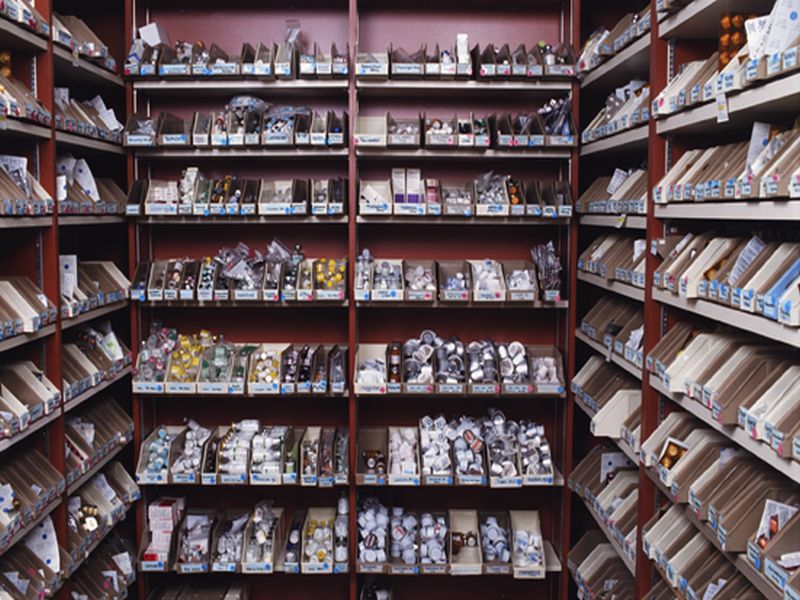Many Drugstores Won't Dispense Opioid Antidote as Required
By Steven ReinbergHealthDay Reporter

TUESDAY, Nov. 13, 2018 (HealthDay News) -- People who overdose on opioids have one lifeline, the drug naloxone, but two new studies find that many pharmacies won't offer this lifesaving antidote without a doctor's blessing.
Though many states have passed laws mandating that naloxone be made available without a prescription, researchers from California found that fewer than 25 percent of pharmacies in that state would give the drug without a prescription. And in the second study from Texas, investigators found that although 8 in 10 drugstores would dispense the drug, less than 7 in 10 had naloxone in stock.
Why? A lack of training, a lack of desire to make room for the drug on their shelves, and outright moral objections to giving an opioid user a medication that might encourage drug abuse, the scientists said.
"We have an opioid crisis in our country, and we have a large number of opioid overdose deaths, about half of which are due to prescription opioids," said Talia Puzantian, lead researcher of the first study, and associate professor of clinical sciences at Keck Graduate Institute School of Pharmacy and Health Sciences in Claremont, Calif.
People getting prescriptions for these narcotic painkillers may not think they are at risk for overdosing, she said. "But these drugs have significant safety issues," Puzantian said.
Part of a pharmacist's role is to educate patients about the dangers of opioids and make naloxone available when they think the patients may be at risk for an overdose, she said. These include people who are taking high doses of the painkillers or are mixing them with other drugs that can increase the risk.
Since 2016, California law has allowed pharmacists to provide naloxone without a prescription.
For the California study, Puzantian and her colleagues called more than 1,100 pharmacies asking if they would provide naloxone without a physician's prescription. Fewer than 25 percent said they would. Of those, only about 50 percent stocked nasal spray naloxone, the researchers found.
Puzantian said that pharmacists need to be taught about the law allowing them to give patients naloxone without a prescription.
In addition, they need to have the drug on hand. Many pharmacies that don't stock naloxone said they didn't have the shelf space, given all the other more popular drugs they need to carry and the low demand for naloxone.
Some pharmacists have a moral objection to providing drugs to opioid users, Puzantian said. They believe that it only encourages drug abuse, but that's not the case, she said.
"Opioid overdoses don't only occur in people using heroin, so patients should talk with their pharmacists about whether they are at risk for overdose and whether they might be a good candidate for having naloxone on hand," Puzantian said.
In the second study, researchers led by Kirk Evoy, a clinical assistant professor at the University of Texas at Austin, studied the availability of naloxone at chain pharmacies in the state. Texas also allows pharmacists to provide the drug without a prescription.
Of the 2,300 drugstores contacted, 84 percent said they would provide the drug, but only 69 percent had it on their shelves. The nasal spray form of the drug was the one most commonly available, the researchers found.
In drugstores that had the drug in stock and would provide it without a prescription, patients could walk into the pharmacy without having seen a doctor and obtain naloxone the same day in approximately 70 percent of the chain pharmacies contacted, Evoy said.
Although chain stores like CVS and Walmart stock naloxone, more need to make the drug available, he said.
"Hopefully, this study serves as a call to action for community pharmacies to better educate their pharmacists and support staff regarding naloxone access laws and company policies regarding naloxone dispensing," Evoy said.
Dr. Sandeep Kapoor, director of screening, brief intervention and referral to treatment at Northwell Health in New Hyde Park, N.Y., said the public also needs to be educated about naloxone.
"We need to encourage education for the community, schools and hospitals to relieve apprehensions one may feel in going directly to a pharmacy to get naloxone," said Kapoor, who was not involved with the studies.
It might be that people feel uncomfortable asking for naloxone because of fear or the stigma associated with opioid use, he said.
"We should continue identifying barriers to utilization and focus efforts to further normalize and destigmatize substance use disorder," Kapoor said.
The reports were published Nov. 13 in the Journal of the American Medical Association.
More information
Visit the U.S. Centers for Disease Control and Prevention for more on opioid overdoses.

The news stories provided in Health News and our Health-E News Newsletter are a service of the nationally syndicated HealthDay® news and information company. Stories refer to national trends and breaking health news, and are not necessarily indicative of or always supported by our facility and providers. This information is provided for informational and educational purposes only, and is not intended to be a substitute for medical advice, diagnosis, or treatment.

